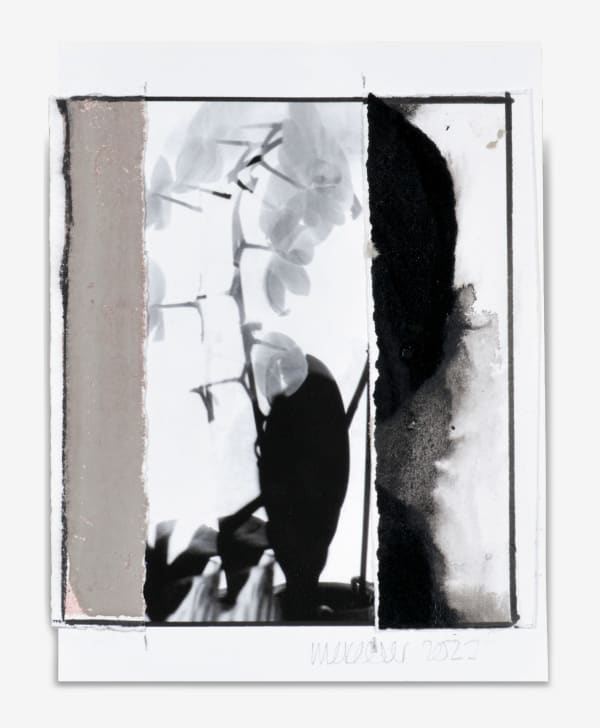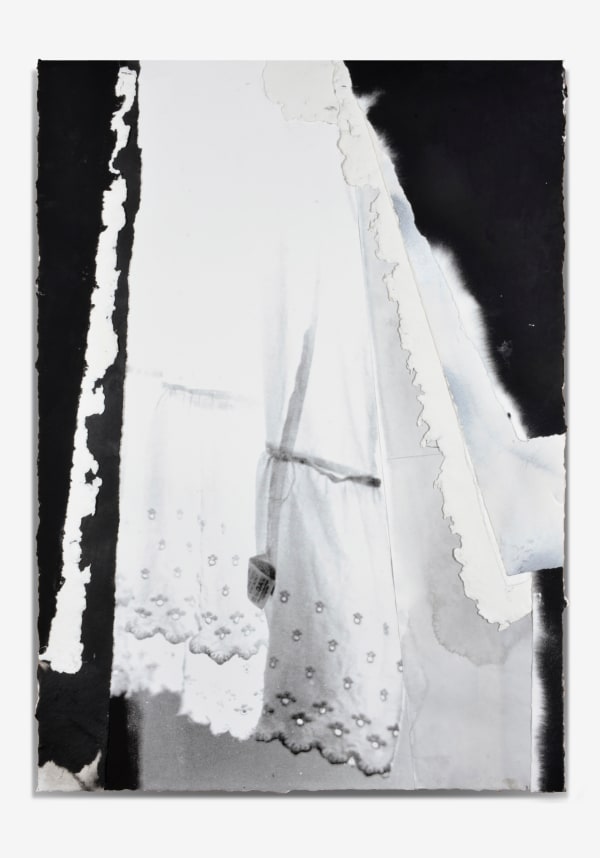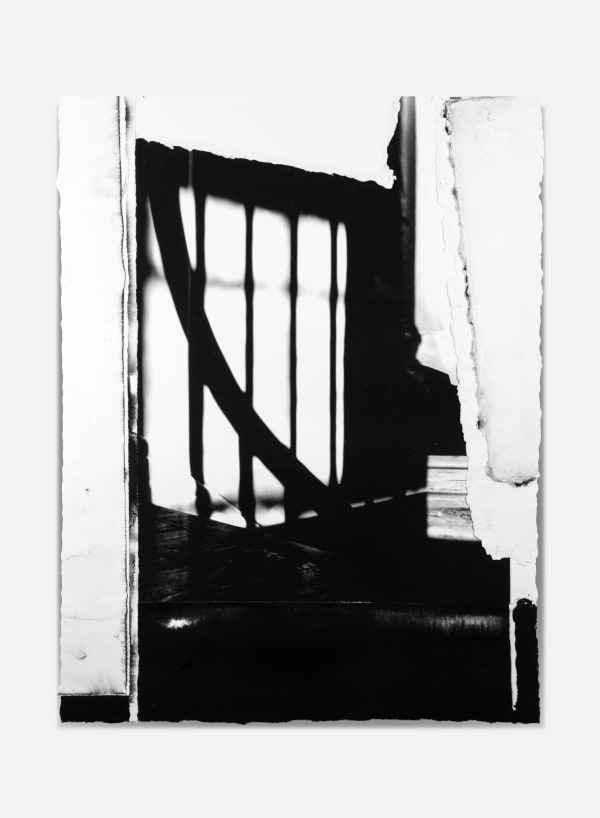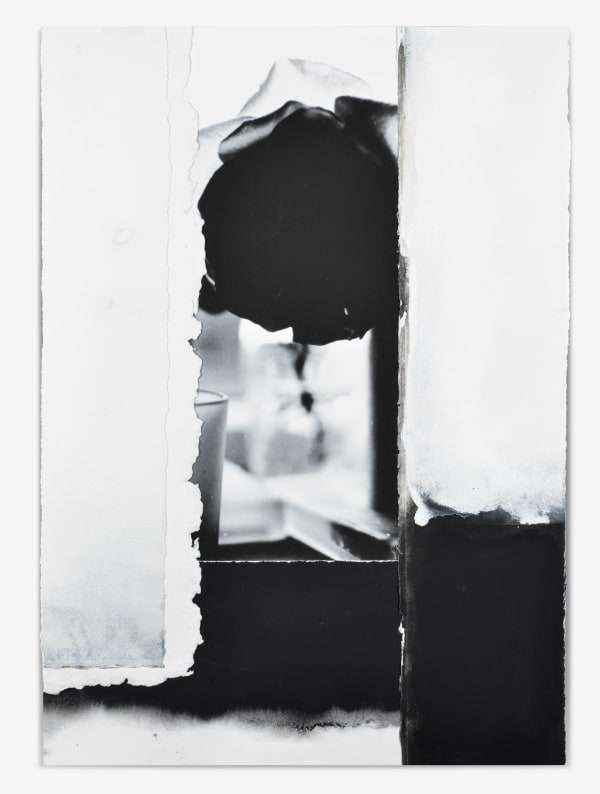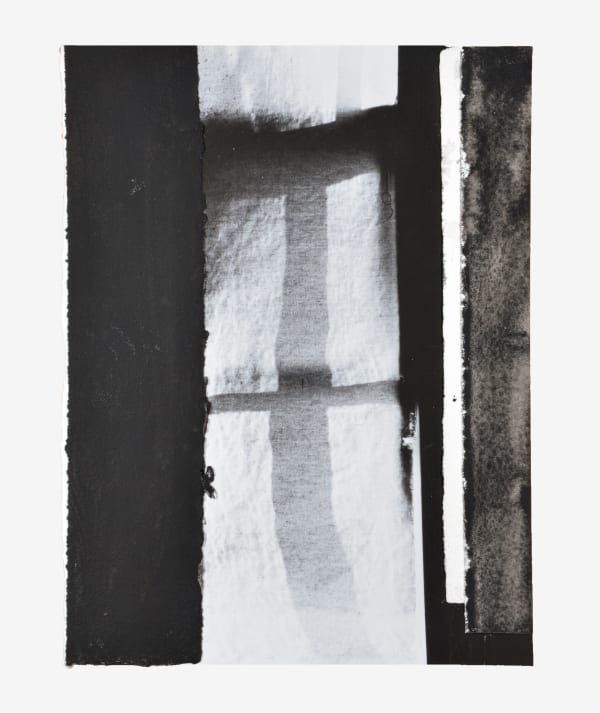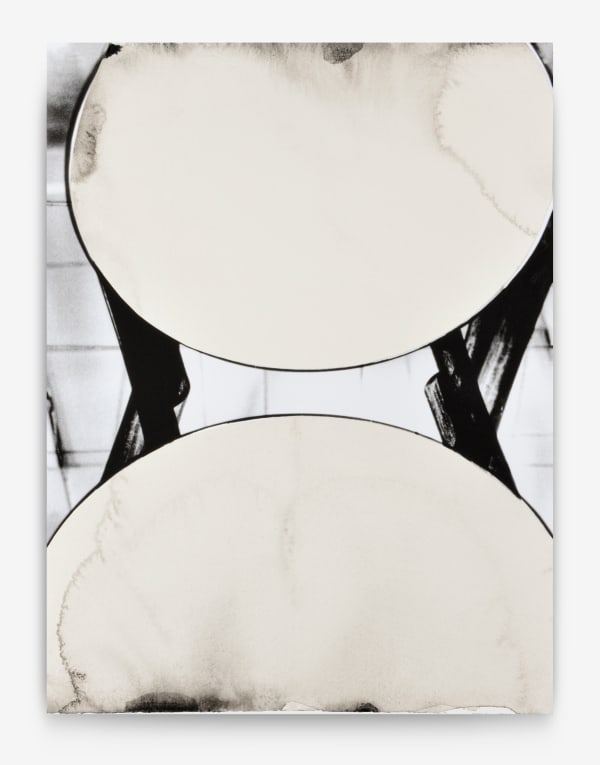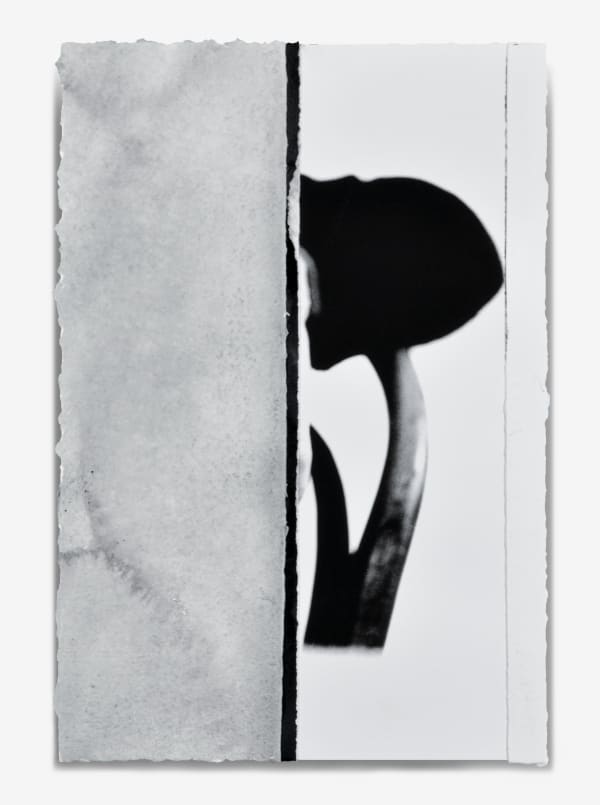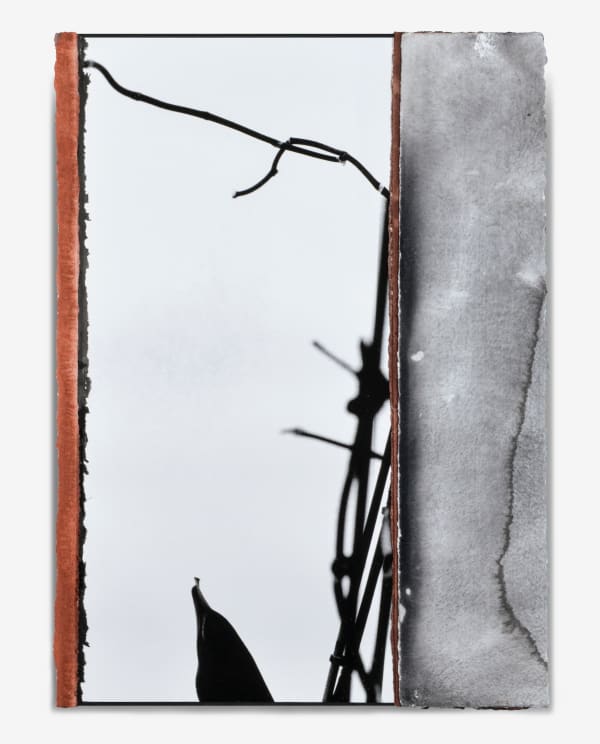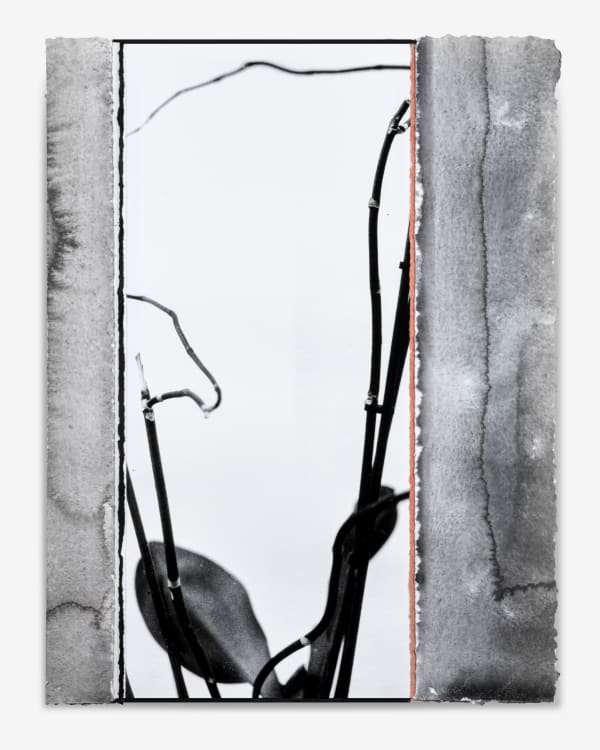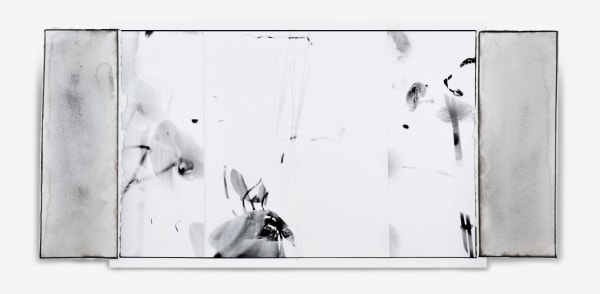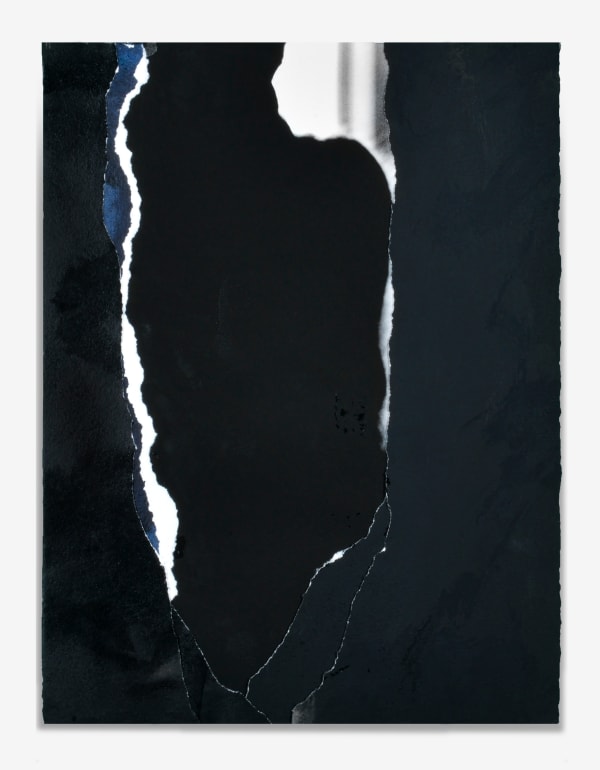Gerlinde
This body of work, his most personal to date, is the portrait of a woman, a love letter to his wife. Drawing on abandoned drawings and his archive of photographs which capture everyday objects in a domestic setting, his black and white photographs are filled with light and shadow, providing evocative glimpses of the human presence which merge with silhouetted objects and structures from their home. McKeever’s emphasis on an abstract language fosters ambiguity. His interest is in pushing the conventional notion of photography as a literal, figurative representative of reality away and establishing a visual language providing only transitory glimpses of reality. This invites the viewer to focus on the compositional elements such as the quality of light and balance of shadow, the drawn line and assembled object, the ‘aura’ of the edge between gouache and photograph, the silhouetted form and the gestural mark. McKeever is intrigued as to ‘where the image begins and finishes’ and the glimpse of a fleeting moment in which nothing is fixed. His work explores the meeting point between the ‘truth’ of photography and the language of painting. The gap between the photograph’s instant reality and the slow incremental process of mark-making in painting.
-
 Gerlinde (Study No. 1), 1995-2022
Gerlinde (Study No. 1), 1995-2022 -
 Gerlinde No. 1, 1995-2023
Gerlinde No. 1, 1995-2023 -
 Gerlinde No. 2, 1995-2023
Gerlinde No. 2, 1995-2023 -
 Gerlinde (Study No. 2), 1995-2022
Gerlinde (Study No. 2), 1995-2022 -
 Gerlinde No. 3, 1995-2023
Gerlinde No. 3, 1995-2023 -
 Gerlinde No. 5, 1995-2023
Gerlinde No. 5, 1995-2023 -
 Gerlinde No. 6, 1995-2023
Gerlinde No. 6, 1995-2023 -
 Gerlinde No. 7, 1995-2023
Gerlinde No. 7, 1995-2023 -
 Gerlinde No. 11, 1995-2023
Gerlinde No. 11, 1995-2023 -
 Gerlinde No. 15, 1995-2023
Gerlinde No. 15, 1995-2023 -
 Gerlinde (Study No. 15), 1995-2022
Gerlinde (Study No. 15), 1995-2022 -
 Gerlinde No. 16, 1995-2023
Gerlinde No. 16, 1995-2023 -
 Gerlinde No. 21, 1995-2023
Gerlinde No. 21, 1995-2023 -
 Gerlinde No. 22, 1995-2023
Gerlinde No. 22, 1995-2023 -
 Gerlinde No. 23, 1995-2023
Gerlinde No. 23, 1995-2023 -
 Gerlinde No. 24, 1995-2023
Gerlinde No. 24, 1995-2023 -
 Gerlinde No. 25, 1995-2023
Gerlinde No. 25, 1995-2023 -
 Gerlinde No. 27, 1995-2023
Gerlinde No. 27, 1995-2023 -
 Gerlinde No. 28 , 1995-2023
Gerlinde No. 28 , 1995-2023 -
 Gerlinde No. 30, 1995-2023
Gerlinde No. 30, 1995-2023 -
 Gerlinde No. 31, 1995-2023
Gerlinde No. 31, 1995-2023 -
 Gerlinde No. 33, 1995-2023
Gerlinde No. 33, 1995-2023 -
 Gerlinde No. 34, 1995-2023
Gerlinde No. 34, 1995-2023 -
 Gerlinde No. 35, 1995-2023
Gerlinde No. 35, 1995-2023
